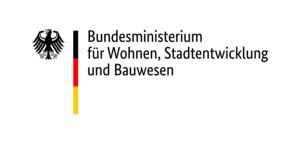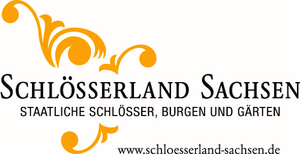PRESS RELEASE: High-tech in Historic Gardens
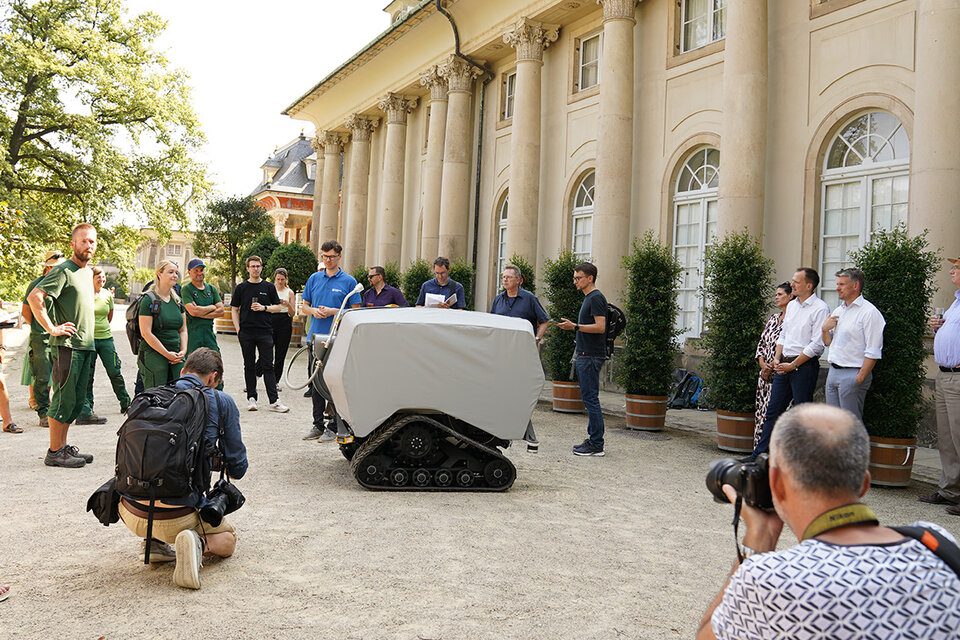
Innovative Robot Technology for the Historical Pillnitz Palace Park
The Barkhausen Institut, in cooperation with the State Palaces, Castles and Gardens of Saxony and the Chair of Industrial Design Engineering at TU Dresden, presented an innovative watering robot on 28 August 2024, which will be tested in the coming weeks in the listed Pillnitz Palace Park.
The robot is part of the ”Climate Change in Historic Gardens“ project, funded by the German Federal Ministry for Housing, Urban Development and Building (BMWSB). The project aims to develop innovative solutions to the risen maintenance requirements caused by climate change. In recent years, climate change has led to increased drought, which has significantly increased the need for irrigation in historic gardens.
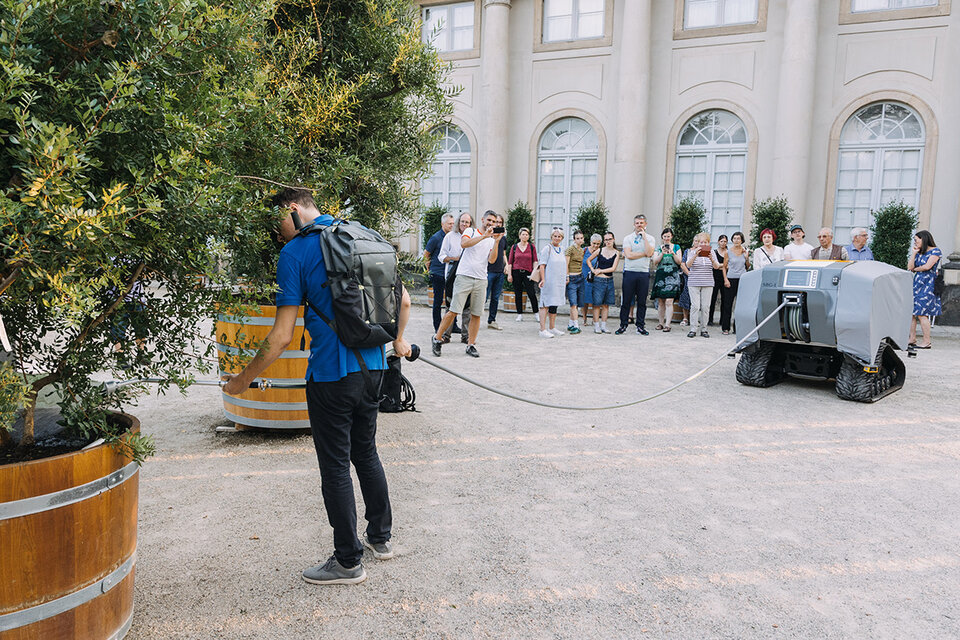
Reliable Technologies in Practice
"Trustworthiness in our technologies is a core element of our work," emphasizes Tim Hentschel, Managing Director of the Barkhausen Institut.” Our goal is to create technical solutions that people don't have to trust blindly, but rather with functions and characteristics that are verifiable and understandable". To ensure practical support for garden maintenance, requirements and needs were analyzed from the outset in close cooperation with the gardening team.
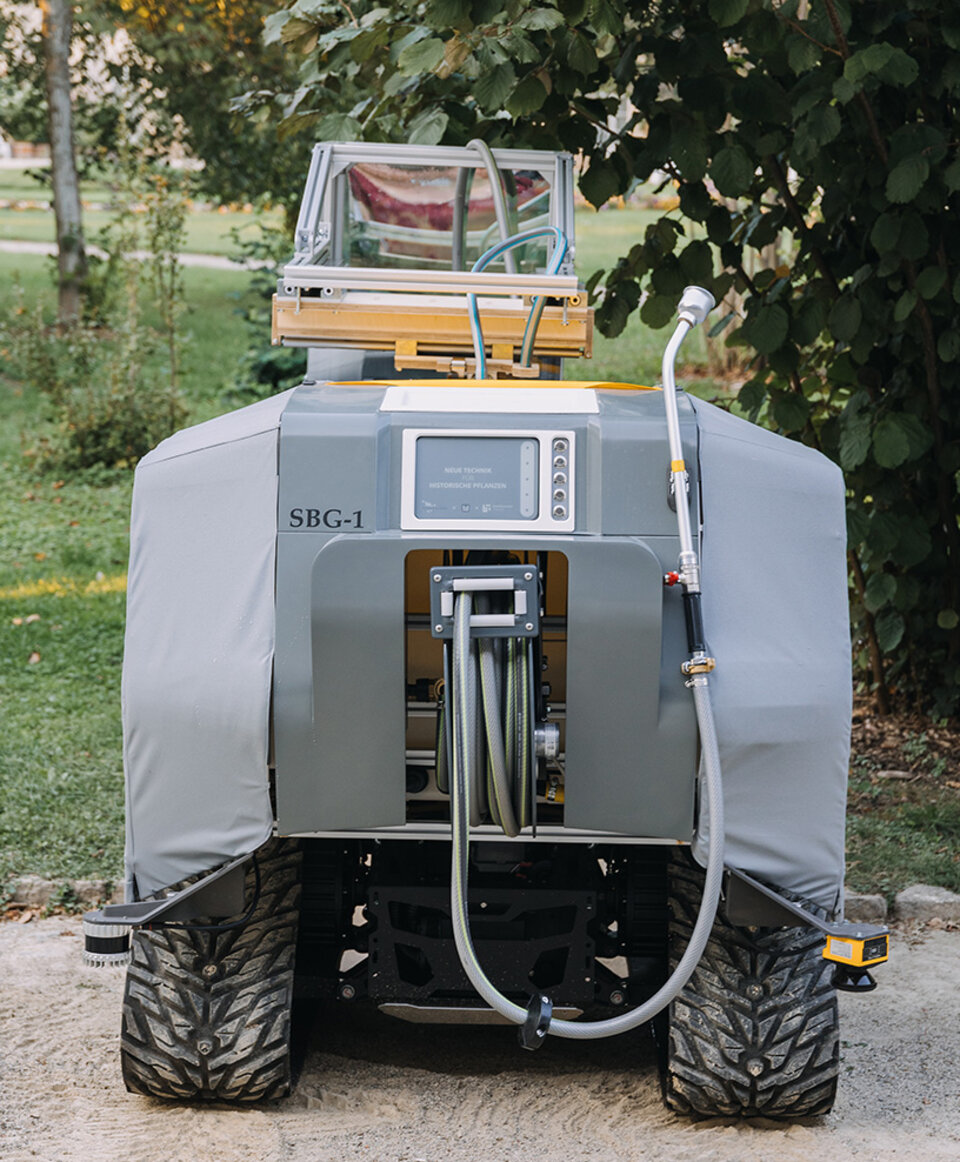
High-Tech in a Historical Context: The Prototype in Practice
"While it takes seconds to get a robot from point A to point B, it took months to develop it," summarizes Markus Böhme, Chief Engineer and Associate Researcher at the Barkhausen Institut. The prototype of the watering robot was developed in collaboration with Barkhausen Institut team members Paul Auerbach, Maximilian Matthé, Jens Kugelmann, Christoph Schubert and Sebastian Vorberg, and TU Dresden researchers Marek Holovac and Julius Schlicht.
The final assembly involved more than 200 screws, 100 meters of 3D-printed filament, 50 meters of aluminium profiles, 30 meters of cables, 15 meters of hoses and 8 sensors. The robot has a 400-liter water tank and can move heavy loads with a tractive force of 700 kilograms, although it weighs half a ton.
The robot can operate for up to six hours on a single battery charge and travels on a quiet, chain-driven platform with extra-wide treads to protect the delicate park grounds. It operates at walking speed and is so quiet that it does not disturb the peace and atmosphere of the garden monument. A laser scanner ensures safety by automatically stopping the robot when necessary.
The prototype can autonomously refill its tank at designated stations and follow gardeners as they carry out their tasks. Despite these autonomous features, central control remains in the hands of professionals, who can manually operate the robot via an intuitive control terminal and monitor plant watering.
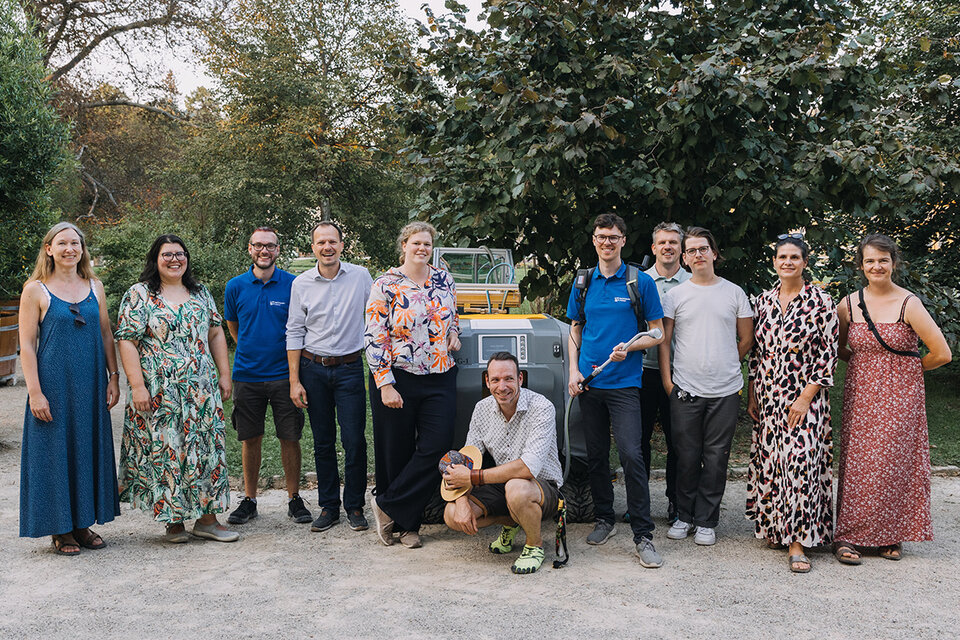
The Barkhausen Institut: Focusing on Trustworthy Technologies
The Barkhausen Institut stands for trustworthy technologies in an increasingly digital world. Besides robotics, the institute focuses on key technologies such as wireless communication and security architectures for digital systems. In the watering robot project, the importance of the collaboration between humans and machines became particularly clear. "We did not want to automate everything possible, but only what would help the gardeners meet the challenges of climate change," explains Tim Hentschel. Working with the Pillnitz gardening team was crucial to ensuring that the robot was a real help and not an additional burden.

The Way Ahead
As the prototype is being tested in Pillnitz Palace Park, a second, identical model is already in development. In the long term, the robot could also be used for transport tasks or path maintenance. This project is an important contribution to meeting the challenges of climate change in historic gardens.
The project is funded by the Federal Ministry for Housing, Urban Development and Building.
Project duration: 2022-2024
Contact: Dipl.-Ing. Markus Böhme, markus.boehme@barkhauseninstitut.org
Project partners: Staatliche Schlösser Burgen und Gärten Sachsen gGmbH, Chair of Industrial Design Engineering (TU Dresden), Institute of Soil Science and Site Ecology (TU Dresden)
